Abstract
Parenteral clindamycin was evaluated in 41 patients with a variety of infections. The four major findings were as follows. (i) Five hours after the intravenous administration of 600 mg of clindamycin, the mean serum concentration in patients with “moderate to severe” hepatic dysfunction was 24.3 μg/ml, and in those with normal liver function it was 8.3 μg/ml (P < 0.02). This suggests that the dose of clindamycin might be modified in patients with liver disease. (ii) There was a positive association between the 5-h serum clindamycin level and the degree of elevation of the serum glutamic oxaloacetic transaminase. (iii) No significant side effects were observed. Of 24 patients with preexisting hepatic dysfunction, 5 showed deterioration and 5 showed improvement of liver function during therapy. (iv) Whereas all pre-treatment isolates of Staphylococcus epidermidis from the anterior nares were susceptible to clindamycin, 6 of 9 post-treatment isolates were resistant, most probably due to selection of resistant organisms.
Full text
PDF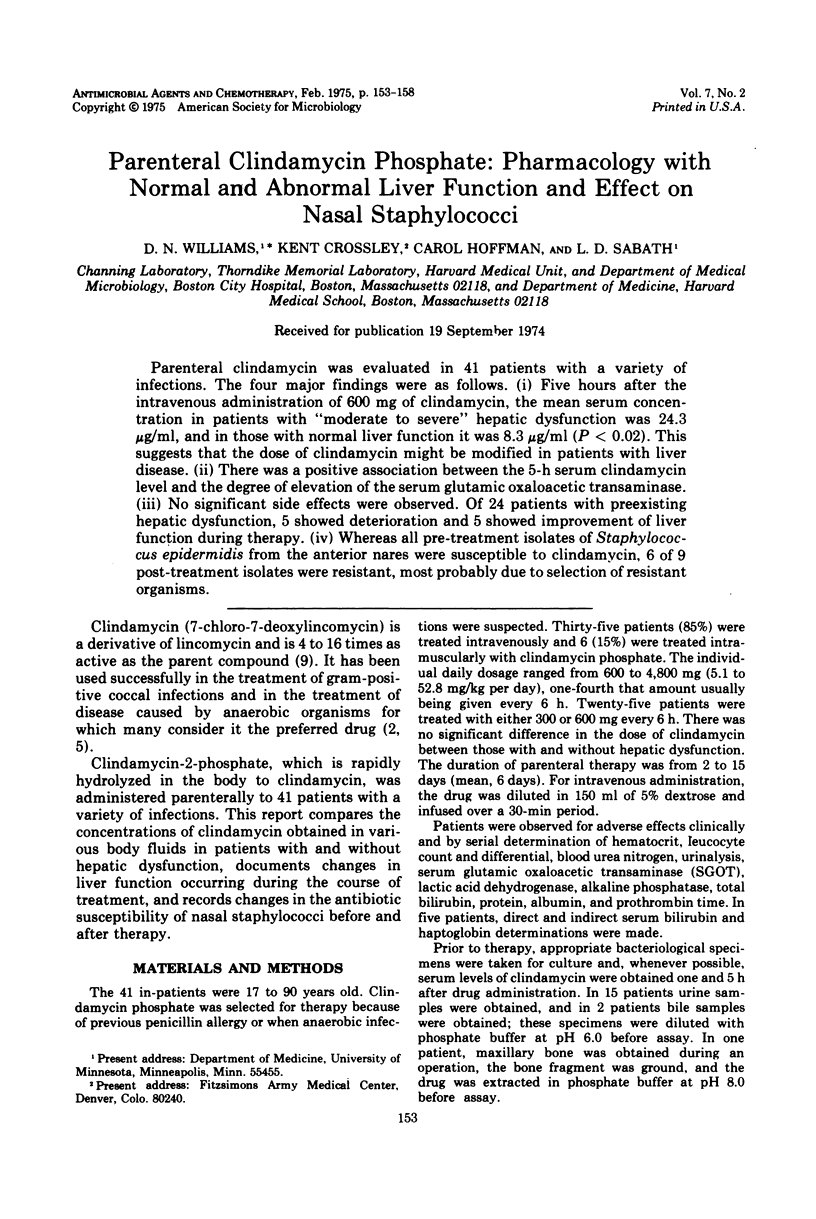
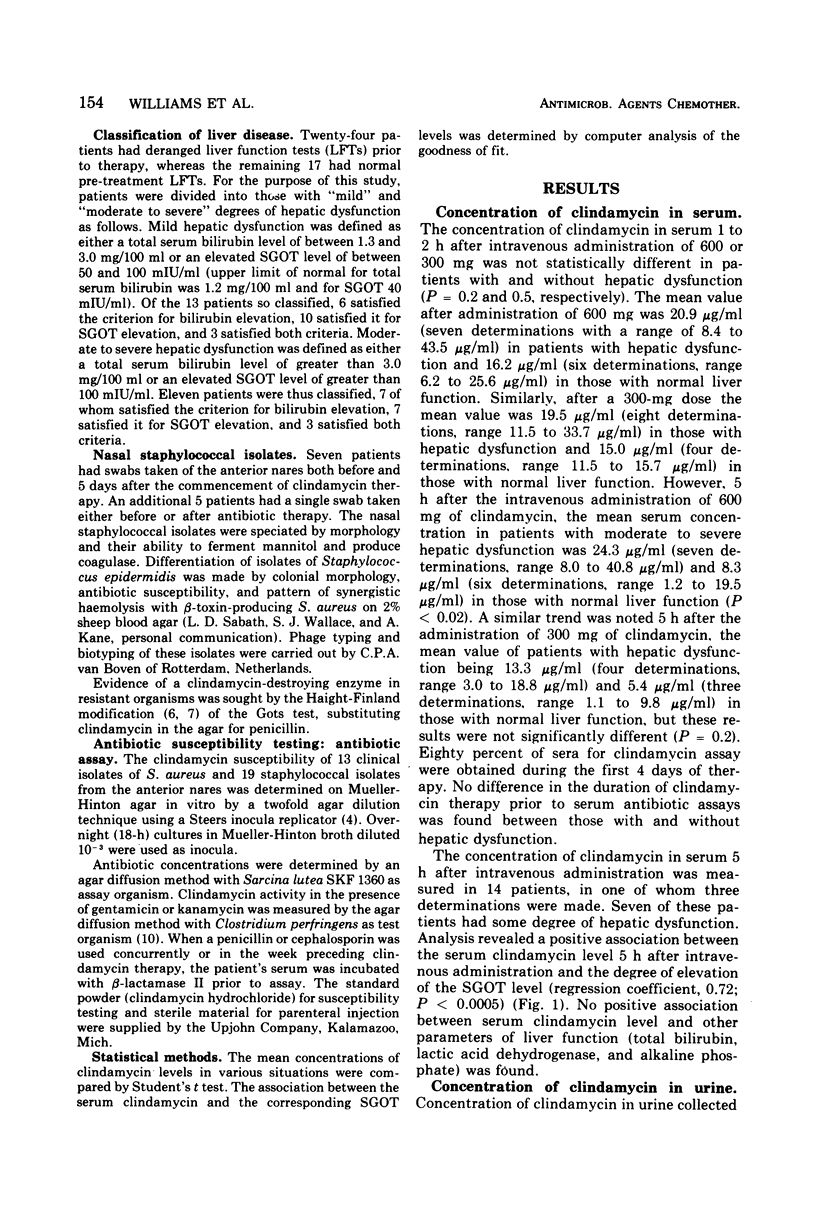
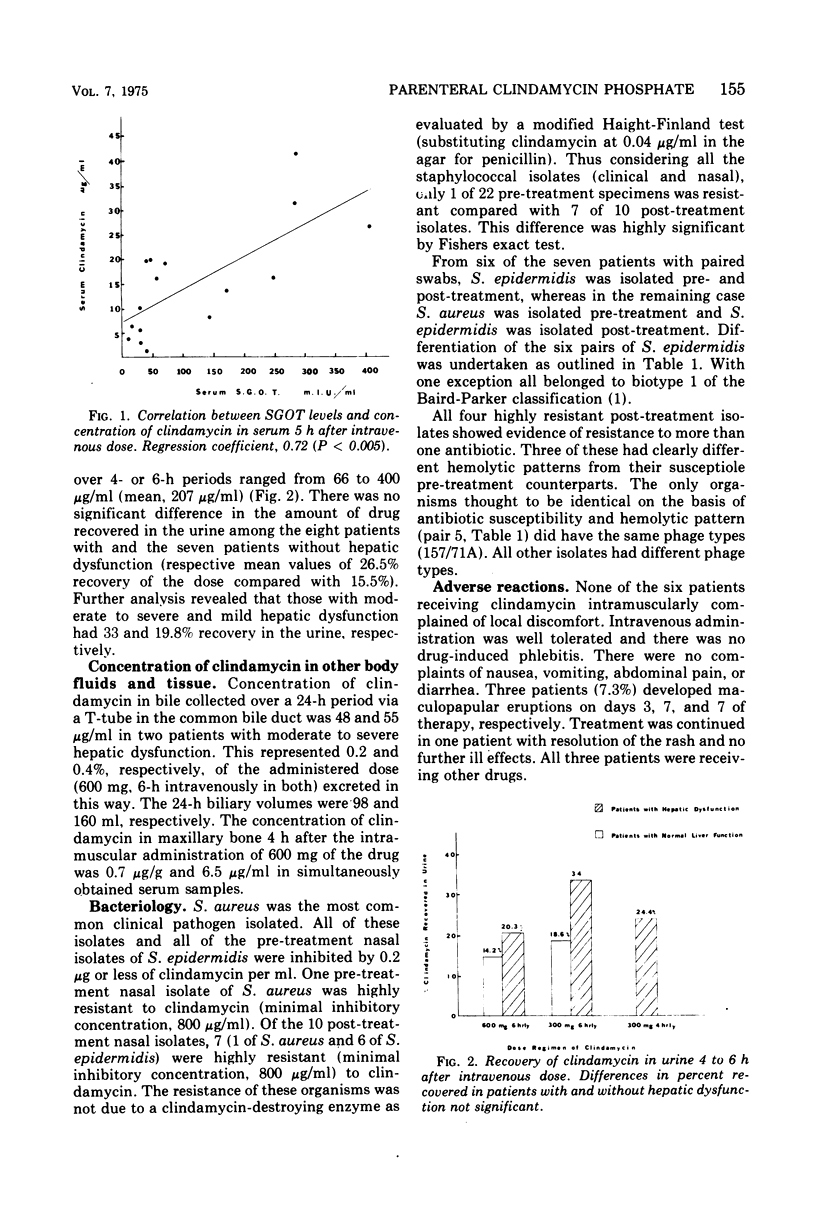
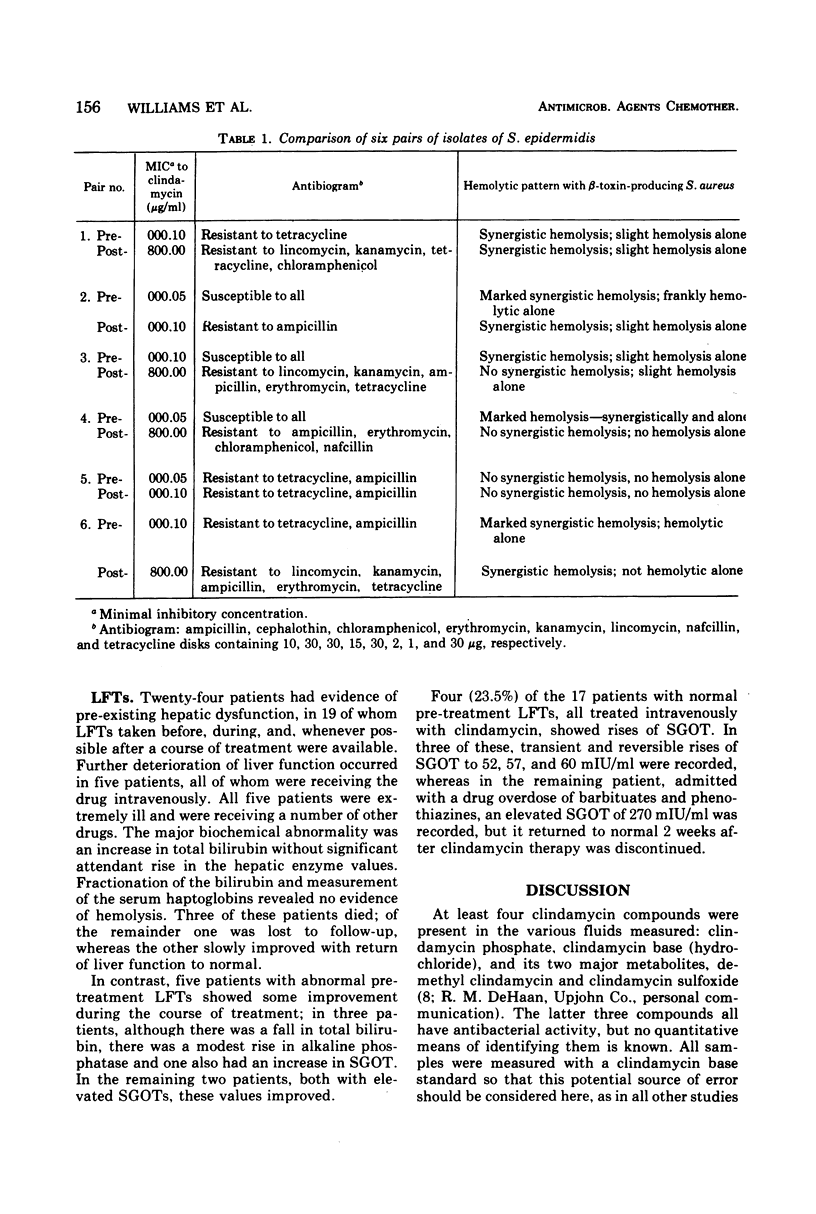
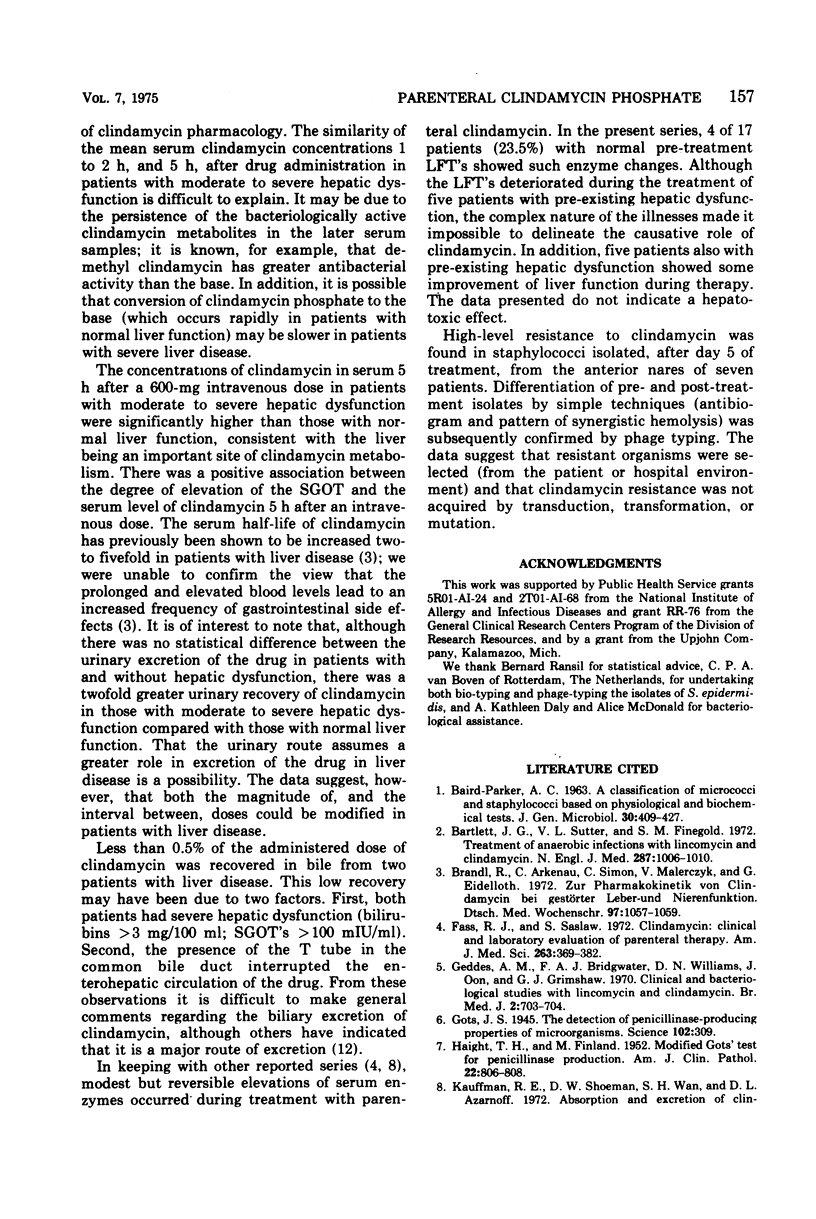
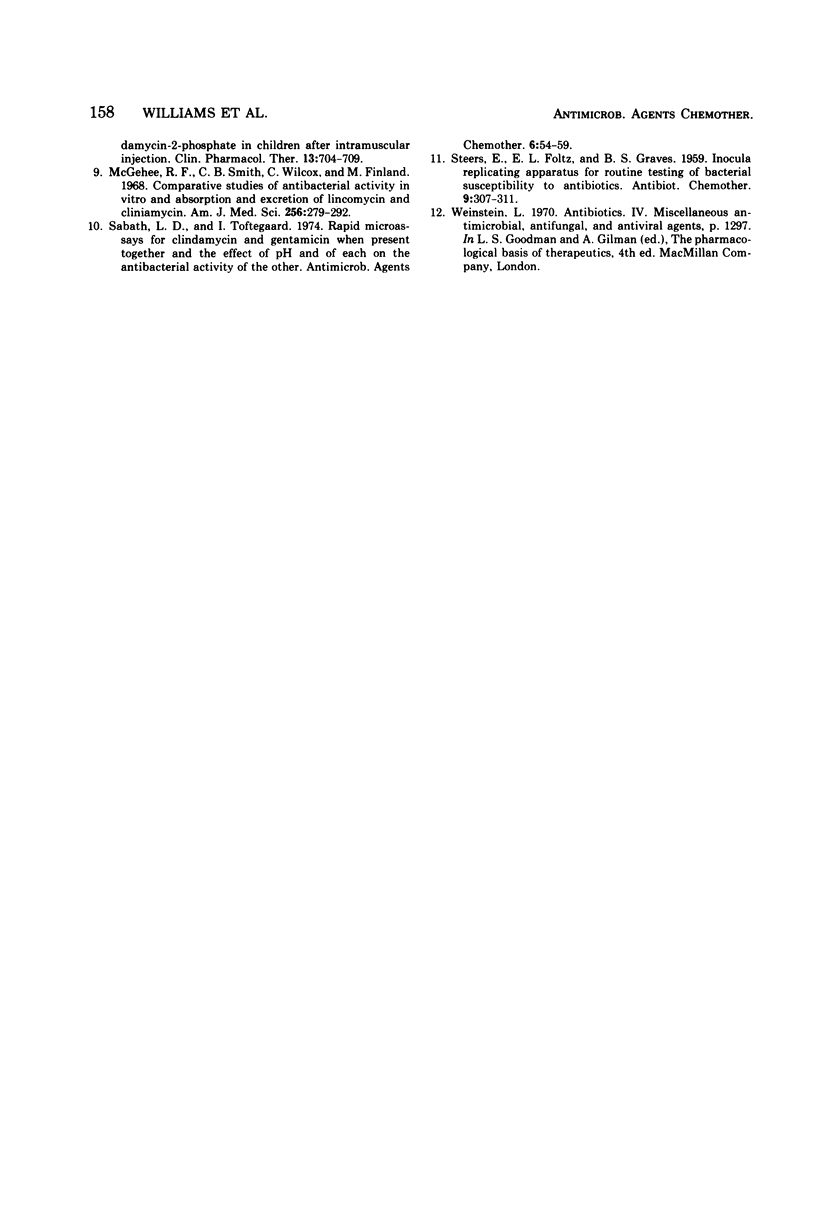
Selected References
These references are in PubMed. This may not be the complete list of references from this article.
- BAIRD-PARKER A. C. A classification of micrococci and staphylococci based on physiological and biochemical tests. J Gen Microbiol. 1963 Mar;30:409–427. doi: 10.1099/00221287-30-3-409. [DOI] [PubMed] [Google Scholar]
- Bartlett J. G., Sutter V. L., Finegold S. M. Treatment of anaerobic infections with lincomycin and clindamycin. N Engl J Med. 1972 Nov 16;287(20):1006–1010. doi: 10.1056/NEJM197211162872002. [DOI] [PubMed] [Google Scholar]
- Brandl R., Arkenau C., Simon C., Malerczyk V., Eidelloth G. Zur Pharmakokinetik von Clindamycin bei gestörter Leber- und Nierenfunktion. Dtsch Med Wochenschr. 1972 Jul 14;97(28):1057–1059. doi: 10.1055/s-0028-1107497. [DOI] [PubMed] [Google Scholar]
- Fass R. J., Saslaw S. Clindamycin: clinical and laboratory evaluation of parenteral therapy. Am J Med Sci. 1972 May;263(5):368–382. [PubMed] [Google Scholar]
- Geddes A. M., Bridgwater F. A., Williams D. N., Oon J., Grimshaw G. J. Clinical and bacteriological studies with clindamycin. Br Med J. 1970 Jun 20;2(5711):703–704. doi: 10.1136/bmj.2.5711.703. [DOI] [PMC free article] [PubMed] [Google Scholar]
- Gots J. S. THE DETECTION OF PENICILLINASE-PRODUCING PROPERTIES OF MICROORGANISMS. Science. 1945 Sep 21;102(2647):309–309. doi: 10.1126/science.102.2647.309. [DOI] [PubMed] [Google Scholar]
- HAIGHT T. H., FINLAND M. Modified Gots test for penicillinase production. Am J Clin Pathol. 1952 Aug;22(8):806–808. doi: 10.1093/ajcp/22.8_ts.806. [DOI] [PubMed] [Google Scholar]
- McGehee R. F., Jr, Smith C. B., Wilcox C., Finland M. Comparative studies of antibacterial activity in vitro and absorption and excretion of lincomycin and clinimycin. Am J Med Sci. 1968 Nov;256(5):279–292. doi: 10.1097/00000441-196811000-00002. [DOI] [PubMed] [Google Scholar]
- Sabath L. D., Toftegaard I. Rapid microassays for clindamycin and gentamicin when present together and the effect of pH and of each on the antibacterial activity of the other. Antimicrob Agents Chemother. 1974 Jul;6(1):54–59. doi: 10.1128/aac.6.1.54. [DOI] [PMC free article] [PubMed] [Google Scholar]


